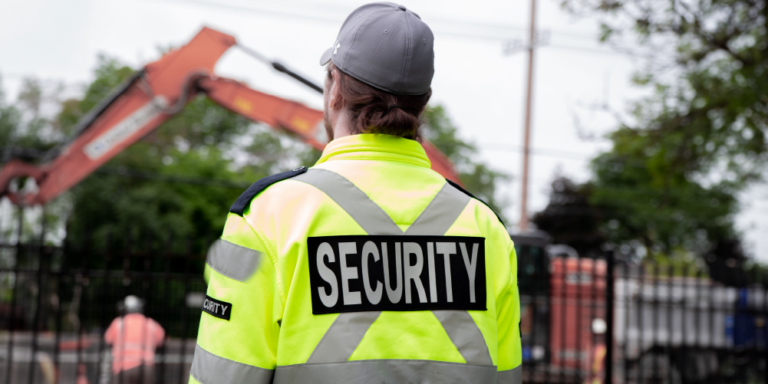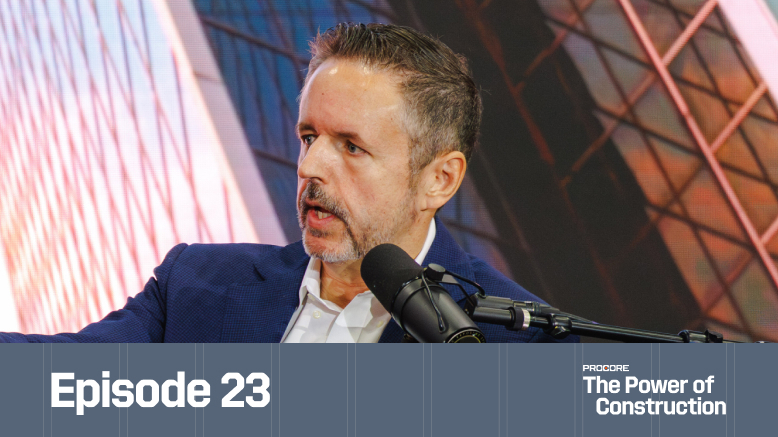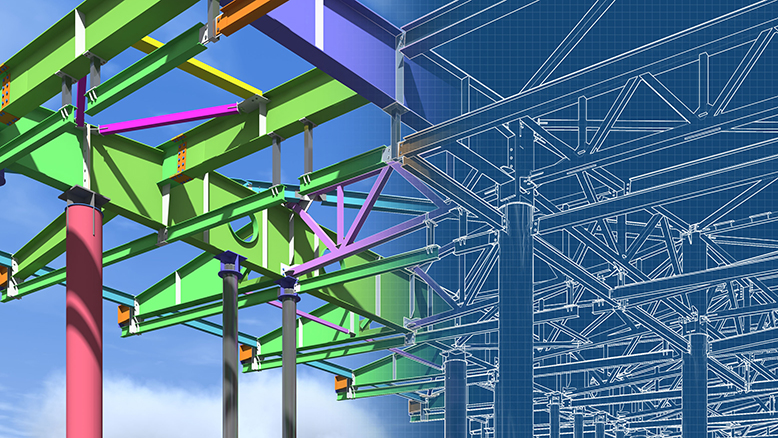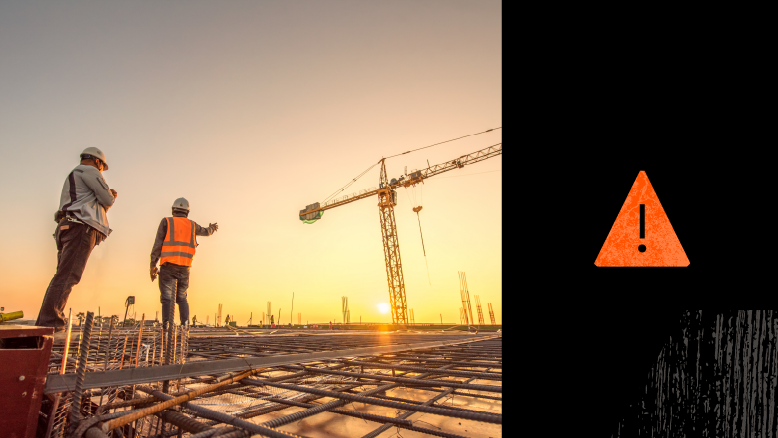— 6 min read
Jobsite Security: Assessing and Minimizing Construction Site Risks


Last Updated Aug 14, 2024

Janine Trinidad
Staff Trainer and Program Manager
25 articles
Janine Trinidad is a Construction Educational professional for Procore Technologies. In previous roles, Janine managed all phases of construction on hotel, mixed-use, and institutional projects in the San Francisco Bay area. She was responsible for negotiating contract budgets and change orders, managing RFIs and submittals, and overseeing quality control, among other duties. She is also a certified transformational coach with a focus on women-centered and trauma-informed methods. She is passionate about transforming the construction industry to be a healthier, more successful and welcoming place to work and believes technology and education are allies in doing so.

Julia Tell
Contributing Writer
70 articles
Julia Tell is a freelance writer covering education, construction, healthcare, and digital transformation. She holds a Ph.D. in Media & Communications and has written for publications including Business Insider, GoodRx, and EdSurge, as well as nonprofits, international businesses, and educational institutions.
Last Updated Aug 14, 2024

Assessing security needs for a construction site early can save time and money and avert potential complications later on the project. Security on a jobsite mitigates risks by protecting the area from theft or vandalism, but it also has a secondary purpose: protecting the public by preventing access to onsite hazards.
In this article, we’ll delve into ways to keep jobsites secure, common security challenges and best practices for creating a safe and secure site.
Table of contents
Common Types of Construction Site Security
Security Guards
GCs may hire an outside contractor to provide a guard during off-hours at the jobsite. The guard should do job walks to check every floor and room of the construction site, and often, there are checkpoints to document that these job walks occur. The security contractor handles hiring and managing the guards and submits the checkpoint reports to the contractor on a daily basis.
Surveillance Cameras
Rented or purchased cameras for temporary use can be temporarily installed around the site. Cameras can record continuously, intermittently or by motion sensor.
Rented or purchased cameras for temporary use can be temporarily installed around the site. Cameras can record continuously, intermittently or by motion sensor. There may be building security cameras on existing structures that can be leveraged for security use during construction, but this isn’t a common scenario and should be checked for appropriate sight lines or coordinated with electrical work.
Security Badging
Primarily for use during the workday, having access badges for all workers on site can help track every person who was on the site, when they enter and when they exit.
This system also corroborates timesheets and logs, making it an extra layer of accountability for project management. The monitoring is a temporary solution for the construction period only, and the turnover in tradespeople necessitates the effort of continuously making access badges.
Additional Security Measures
While the above measures are most often needed to secure the site from theft or unauthorized access, other features of the construction site and additional methods can contribute to overall site security.
- Restricted access: Perimeter fencing appropriate to the location
- Signage: Clear signs and blocked-off areas to deter trespassers or thieves
- Visibility: Proper lighting during off-hours
- Site monitoring: Alarm systems to supplement surveillance cameras
- Equipment tracking: GPS devices and multiple identifying markers on construction equipment
Who is responsible for security on construction sites?
Both the general contractor and the property owner are invested in site security and part of the conversation and approval process when deciding what security measures to implement on the site.
Together, they determine the level of risk and costs associated with securing the site. The cost is usually included in the price of the overall project, but the management and liability for the security typically fall on the general contractor while construction is underway. Risk is increased in certain situations.
For example, a high-profile project like construction on a new highway, or one that will temporarily displace residents and face heavy public scrutiny, may call for more robust and costly security measures due to its highly visible nature and a perceivable threat to the community. Another example would be a project’s location in an environment known to have a high crime rate or increased walking traffic making it a tempting target for vandalism.
The site superintendent is responsible for maintaining security protocols during construction. Daily site walks by the site superintendent should be a regular part of a safety schedule. Full responsibility for security reverts to the owner when the project is handed over, but owners also provide oversight over the GC throughout the construction period.
Jobsite Security Challenges
The timing of discussions on jobsite security between the owner and general contractor will vary on each project. On some projects, it might be part of the bid process, but it often gets squeezed for time while a project is pushing to break ground. Getting all security equipment and plans into the working documents and logistical plans can be challenging with a fastrack schedule.
In addition to time pressure, here are five common challenges contractors face.
- Hiring security firms to monitor sites during working hours can be costly but necessary to deter trespassers from stealing supplies or threatening worker safety while the gates are open for deliveries.
- Managing consistent performance from security guards and high turnover with staff.
- Gaining timely access to job walk reports from the security contractor.
- Having enough security cameras to cover the construction site fully can be costly.
- Security badging limits the number of entrances for workers, and it can be time-consuming to make new badges when new workers rotate through the site.
Stay updated on what’s happening in construction.
Subscribe to Blueprint, Procore’s free construction newsletter, to get content from industry experts delivered straight to your inbox.

Best Practices for Construction Jobsite Security
Protecting your jobsite from theft, loss, or trespassing can be successful with proper planning and adherence to the following best practices.
Know the project’s needs.
Each owner and project's security needs and preferences differ. Try to anticipate future needs and negotiate with the owner to make everyone comfortable with the plan. Different types of projects, locations, surroundings, and public profiles will require various forms and levels of security.
Clarify security roles and responsibilities.
Determine who shoulders the costs of security measures and who is responsible for implementation. Include security responsibilities in subcontracts so subcontractors can do their part to secure their materials and tools.
Include security in worker safety training, and spell out who manages the security plan on site. Usually, the site superintendent has primary responsibility for overseeing security, but the project manager may handle the security contracts and receive reports.
Manage materials wisely.
Properly managing staging areas for materials and tool storage can make a site less attractive to thieves. Bright lighting overnight with clear sightlines can help guards or cameras see more areas of the site. Inventory tracking for equipment and supplies can also help ensure that all property is accounted for.
Implement fencing and lockup routines.
Appropriate perimeter fencing and a nightly routine for locking equipment, toolboxes, and any entrances will help keep trespassers and thieves out of the site. The site superintendent should do AM and PM job walks to record observations in their daily job logs and review security reports daily.
Put plans in place early (and stick to them).
Assess and implement security measures early enough that any site access badging requirements are spelled out in subcontracts and kick-off or orientation meetings, if possible. Make sure security is part of the emergency and safety plan. Security breaches might lead to a safety incident and both matters might share protocols or reporting structures.
Changing jobsite rules mid-project can confuse subcontractors and workers, and it can be harder to get buy-in if security and access protocols shift. Staying on top of plans, managing equipment or another (security) contractor can be aided with project management software.
Courses about construction.
For construction.
Unlock your career potential with our free educational courses on Health & Safety, Data in Construction, and more.
Jobsite security helps minimize risk.
Preventing unauthorized access to a construction jobsite can minimize the risk of theft or injury, and it is in the general contractor's best interest to manage site security well.
Safeguarding the construction job site with clear and visible security can prevent incidents, financial losses, and construction delays from keeping a project running smoothly. Additionally, successful job site security can ensure positive client relationships because owners will feel confident that the GC is protecting their investment.
Was this article helpful?
Thank you for your submission.
86%
14%
You voted that this article was . Was this a mistake? If so, change your vote
Scroll less, learn more about construction.
Subscribe to The Blueprint, Procore’s construction newsletter, to get content from industry experts delivered straight to your inbox.
By clicking this button, you agree to our Privacy Notice and Terms of Service.
Thank you!
You’re signed up to receive The Blueprint newsletter from Procore. You can unsubscribe at any time.
Categories:
Written by

Janine Trinidad
Staff Trainer and Program Manager | Procore Technologies
25 articles
Janine Trinidad is a Construction Educational professional for Procore Technologies. In previous roles, Janine managed all phases of construction on hotel, mixed-use, and institutional projects in the San Francisco Bay area. She was responsible for negotiating contract budgets and change orders, managing RFIs and submittals, and overseeing quality control, among other duties. She is also a certified transformational coach with a focus on women-centered and trauma-informed methods. She is passionate about transforming the construction industry to be a healthier, more successful and welcoming place to work and believes technology and education are allies in doing so.
View profile
Julia Tell
Contributing Writer | Procore Technologies
70 articles
Julia Tell is a freelance writer covering education, construction, healthcare, and digital transformation. She holds a Ph.D. in Media & Communications and has written for publications including Business Insider, GoodRx, and EdSurge, as well as nonprofits, international businesses, and educational institutions.
View profileExplore more helpful resources

Who Owns Construction’s Intelligence?
In this episode of The Power of Construction, we chat with Hugh Seaton, CEO of The Link.ai, to step past the buzz around tools and features and unpack what true...

How Close Are We to Bridging the Design-Build Divide?
For decades, construction decisions have often been made based on gut instinct. But what if the real barrier to transformation isn’t technology—it’s the divide between design and construction? In episode...

BIM’s Role in Risk Mitigation: Strategies for Success
Building information modeling (BIM), has been touted as a way to deliver a broad range of wins on any construction project. It supports stronger planning and smoother collaboration. It provides...

Risky Business: Transforming Risk Mitigation into Risk Prevention
Risk burrows into every aspect of construction — costs, safety, labor, scheduling, profitability and even market leadership. In an inherently dangerous industry, risk is inevitable, but truly powerful risk mitigation doesn’t...
Free Tools
Calculators
Use our calculators to estimate the cost of construction materials for your next project.
Templates
Find a template to help you with your construction project tasks.
Material Price Tracker
Get the latest U.S. retail prices and view historical trends for common building materials.
Glossary
Explore key terms and phrases used in the industry.
